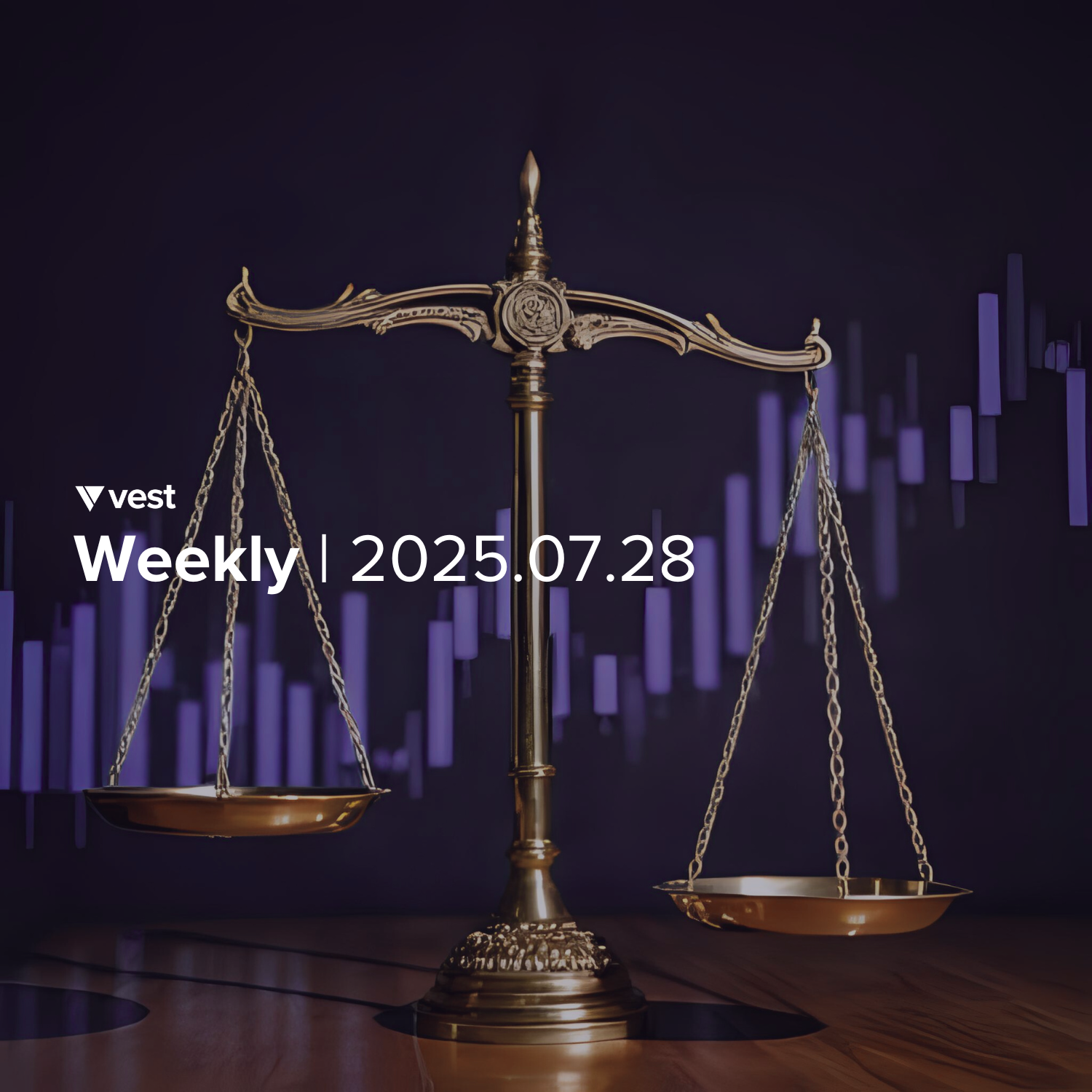Records at the Top, Adjustments at the Base: The Market Seeks Balance
This week, the market showed two sides: historic highs for some, cautious shifts for others. Discover how top companies lead while smart investors adjust, navigating inflation and mixed results. Understand what these movements mean for your money.

While the S&P 500 and Nasdaq once again hit all-time highs this week, the decisions of major funds and the evolution of economic data suggest that, beneath the surface, the market is beginning to move more cautiously. With mixed earnings in tech, persistent inflationary pressures, and a quiet shift toward defensive sectors, the outlook is more complex than headlines suggest.
New records—but not for everyone
The S&P 500 rose 1.3% for the week, surpassing 6,380 points and marking its fourth record high in July. The Nasdaq Composite also reached a new high, climbing above 21,100 points, driven by strong performance from tech giants like Alphabet.
In contrast, the Dow Jones posted a gain but failed to hit a new high, reflecting its lower exposure to the tech sector. The Russell 2000, which includes smaller companies, rose just 0.4%, still far from catching up with the broader market. This divergence reinforces the idea that the current rally is being sustained by a small group of large-cap companies.
Inflation firmer than expected
The June Consumer Price Index showed a year-over-year increase of 2.7%, with a monthly rise of 0.3%. While the numbers were in line with expectations, they offered little support for an imminent rate cut. Core inflation, which excludes food and energy, held steady at 2.9% annually—still above the Federal Reserve’s target.
Combined with recent statements from several Fed officials, the data reinforced the perception that monetary policy will remain tight at least through the end of the year.
Rotation toward defensive sectors
Institutional flows revealed a clear trend: major funds reduced their exposure to tech—particularly software and semiconductor companies—and increased positions in defensive sectors such as consumer staples and utilities. This rotation, quiet but consistent, suggests that sophisticated investors are seeking protection ahead of a possible correction.
This trend is especially significant in a market where gains are concentrated in a handful of stocks. If one of these major companies disappoints, the impact could ripple through the broader indexes.
Alphabet rises, Tesla stumbles
Earnings season continued to deliver mixed signals. Alphabet beat expectations, buoyed by its AI operations, and its stock rose around 3%. On the flip side, Tesla missed forecasts in its Q2 results and dropped 9% for the week, affected by lower margins and slower sales growth.
These contrasting outcomes show that the market is rewarding or penalizing companies with greater intensity, without assuming a strong overall performance from the tech sector.
Trade relief with Europe
On the international front, the United States and the European Union reached a trade agreement that eased previous tensions. Lower tariffs than initially proposed were agreed upon, benefiting sectors such as technology, defense, and energy. While the immediate impact was positive, pending negotiations with key partners like China, Mexico, and Canada could bring back volatility in the coming weeks.
👉🏽 In summary:
The S&P 500 and Nasdaq closed the week at record highs, led by a handful of tech giants.
Inflation remained stable, but still above the Fed’s target.
Institutional investors began rotating toward defensive sectors, cutting back on tech.
Alphabet exceeded expectations; Tesla dropped sharply after disappointing results.
The trade agreement with Europe eased tensions, but global risks remain.
The market continues to climb, but on increasingly narrow footing. With more earnings on the horizon and the Fed’s upcoming decision, the next few weeks will be crucial to determine whether this rally has solid foundations—or if we’re approaching a turning point.
The opinions in the preceding commentary are as of the date of publication and are subject to change. Information has been obtained from third party sources we consider reliable, but we do not guarantee the facts cited are accurate or complete. This material is not intended to be relied upon as a forecast or investment advice regarding a particular investment or the markets in general, nor is it intended to predict or depict performance of any investment. We may execute transactions in securities that may not be consistent with the report’s conclusions. Investors should consult their financial advisor on the strategy best for them. Past performance is no guarantee of future results. For illustrative purposes only. Does not represent an investment recommendation. For more information, please see our Social Media Disclosure.
Securities offered by Northbound Securities, LLC Member FINRA/SIPC
Sources: Bloomberg, Reuters Energy, CNBC Markets, ISM Manufacturing Report